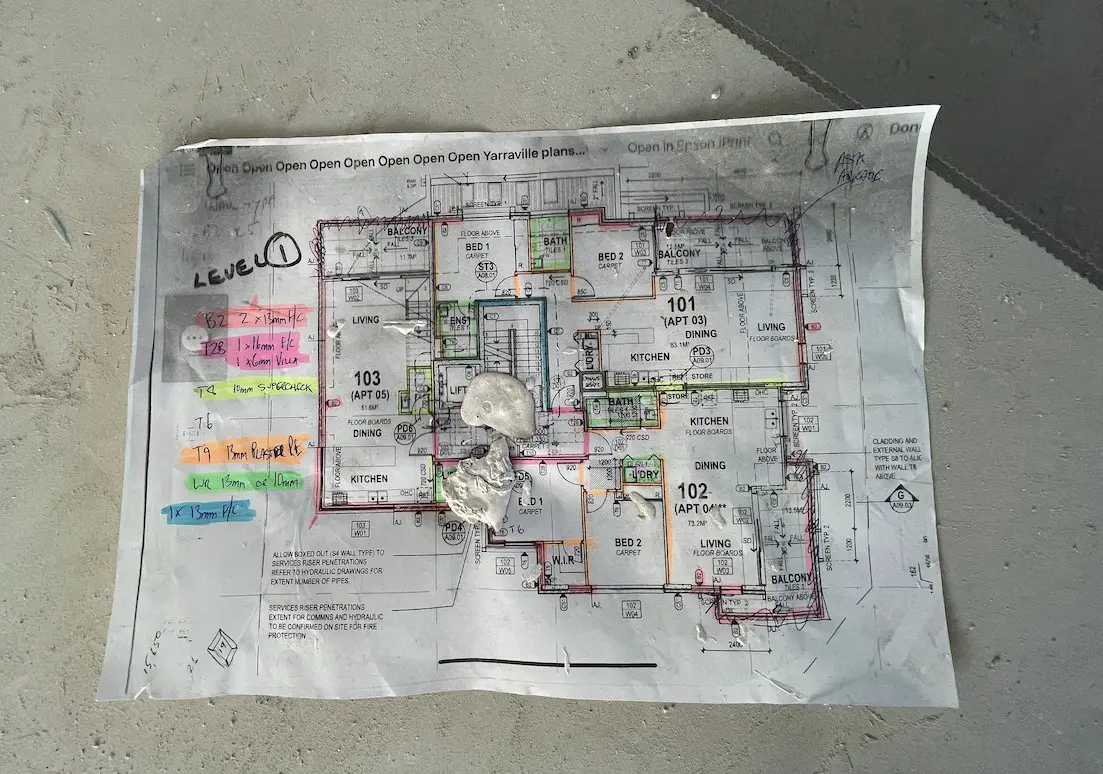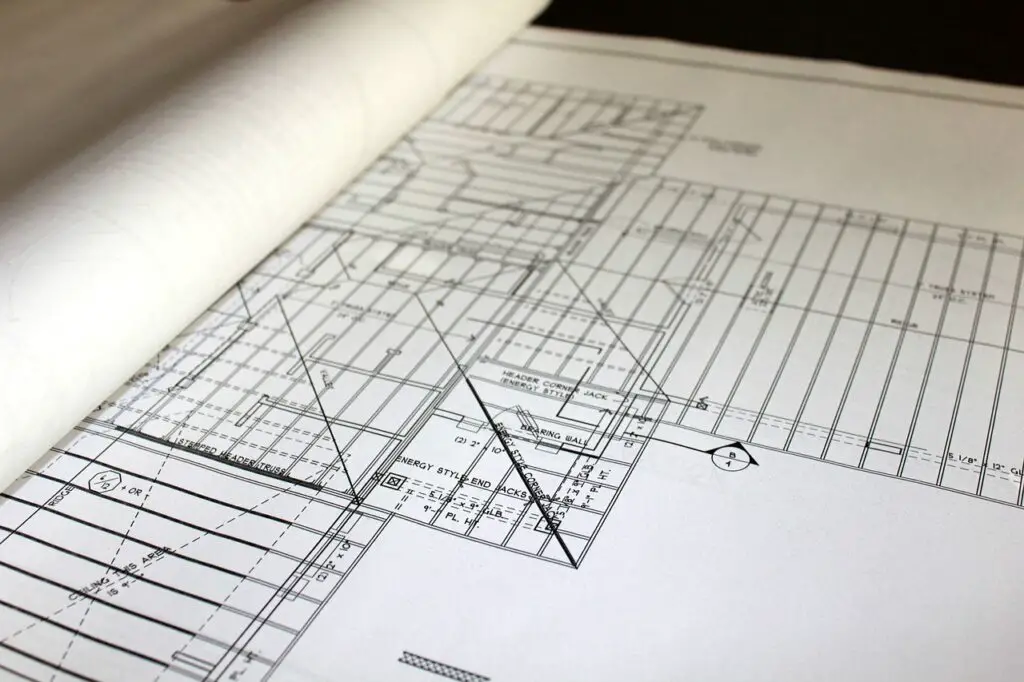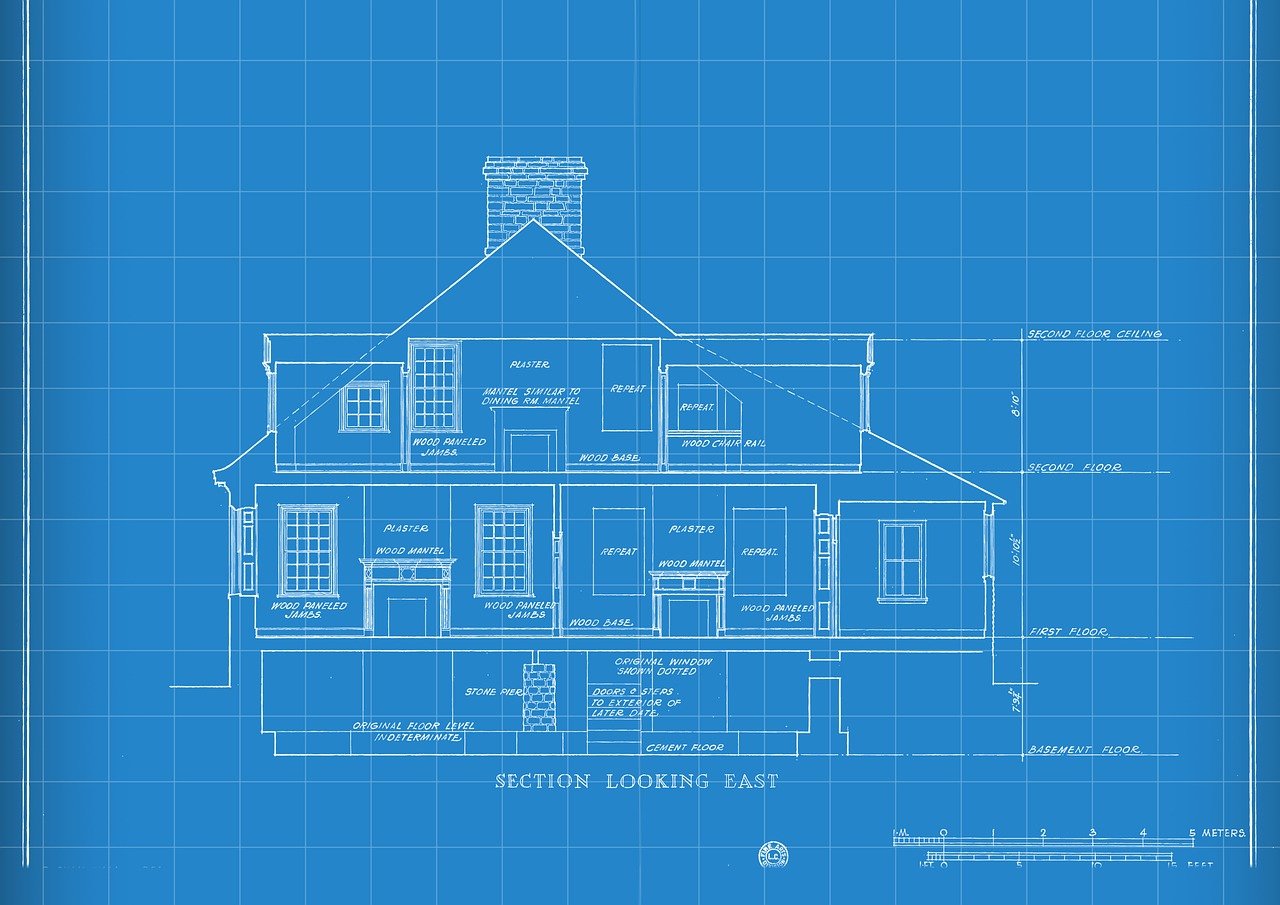Are you a little confused when reading blueprints? The below article will give you some pointers.

Blueprints are detailed technical drawings that provide essential information for construction projects.
Understanding how to read blueprints accurately is a valuable skill. When you can read blueprints accurately you will be able to confidently talk to builders and tradespeople and ask the right questions.
By mastering the art of blueprint reading, you can enhance your professional capabilities and achieve successful project outcomes.
Key Takeaways
- Blueprint reading requires a specific set of skills and knowledge.
- Blueprints contain essential information about project specifications, materials, and measurements.
- Interpreting blueprint symbols and notations is crucial to understanding the project’s details.
- Blueprints provide precise measurements and dimensions that are essential for accurate project execution.
- By mastering blueprint reading, you can improve your professional capabilities and contribute to successful project outcomes.
Understanding Blueprint Symbols and Notations
Blueprint symbols and notations play a critical role in communicating vital information about a construction project.
They provide essential details, such as dimensions, materials, and construction methods that enable builders to execute the project accurately and efficiently.
In this section, we will provide you with an overview of some of the most common blueprint symbols and notations, helping you become more confident in reading and interpreting blueprints.
Blueprint Symbols
Blueprint symbols can represent a range of features, from doors and windows to plumbing and electrical fixtures.
Understanding these symbols is crucial for understanding the design of the project.
Here are some of the most common symbols you are likely to encounter:
| Symbol | Description |
| Door Swing | Indicates the direction in which a door will swing. |
| Electrical Outlet | Shows the location of an electrical outlet. |
| Window | Represents the location and size of a window. |
| Plumbing Fixture | Indicates the location of a plumbing fixture, such as a sink or toilet. |
Blueprint Notations
Blueprint notations indicate specific information related to the materials, dimensions, and construction methods used in the project. Here are some of the most common notations:
Structural Steel: S15x50.6 represents an S-shaped beam that weighs 50.6 pounds per foot and has a depth of 15 inches.
Wall Construction: 2×4 @ 16″ OC represents the dimensions of wall studs, which are 2 inches by 4 inches and spaced 16 inches apart on center.
- Measurement Notations: Fractional notations, such as 1/16, 1/8, 1/4, 1/2, and 1, represent different unit measurements used in blueprints, such as inches and feet.
- Material Indicators: Materials are indicated by standard abbreviations, such as WD for wood, STL for steel, and CONC for concrete.
As you can see, blueprint symbols and notations provide essential information about the materials, dimensions, and construction methods used in a project.
By understanding and interpreting these symbols and notations, you can gain a deeper understanding of the project and execute it with greater precision.

Interpreting Blueprint Measurements and Dimensions
Blueprint measurements and dimensions are vital to understanding construction projects. It’s essential to know how to interpret them to ensure accurate execution.
Let’s take a closer look at the different types of blueprint measurements and dimensions:
Length, Width, and Height
Length, width, and height are fundamental measurements that provide a basis for understanding a project’s scope. They represent the physical size of the project and are typically measured in feet and inches.
Scale and Ratio
Blueprints often use scale and ratio to provide an accurate representation of the project in a smaller size. For example, a 1/4 inch scale means that every 1/4 inch on the blueprint represents one foot in the real world. Understanding these measurements is crucial for accurate visualization of the project.
Area and Volume
Blueprints may also include area and volume calculations. Area is the measurement of flat surfaces such as walls and floors, while volume is the measurement of 3D spaces such as rooms or buildings. These measurements are essential for accurately estimating material needs and project costs.
Example Table
| Type of Measurement | Unit of Measurement | Example |
| Length | Feet and Inches | 10 feet 6 inches |
| Scale | Ratio | 1/4 inch scale |
| Area | Square Feet | 250 square feet |
| Volume | Cubic Feet | 750 cubic feet |
Remember, accurately interpreting blueprint measurements and dimensions is crucial for project success.
Take the time to thoroughly understand each type of measurement to ensure accurate execution from start to finish.

Conclusion
Blueprint reading is a skill that can greatly enhance your professional capabilities and contribute to the overall success of your projects. By mastering the art of blueprint reading, you can confidently undertake construction projects and achieve your desired outcomes.
Remember, blueprint reading is a skill that requires practice and patience. By continually improving your abilities, you can increase your efficiency and effectiveness as a construction professional.
Whether you are a seasoned veteran or just starting, the knowledge and skills outlined in this guide will undoubtedly serve you well.
We hope this guide has been helpful in your journey to learning how to read blueprints. We wish you all the best in your future projects, and may your blueprint reading skills never falter!
FAQ
How can I improve my skills in reading blueprints?
This requires regular practice, analyzing different types of blueprints and their corresponding symbols and notations. Familiarize yourself with industry standards and conventions and seek resources such as books or online tutorials to deepen your understanding. It’s a good idea to seek out experienced professionals who can provide guidance and feedback on your interpretations.
What are some common symbols used in blueprints?
Blueprints often use a variety of symbols to represent different elements or features of a project. Common symbols include circles for holes, squares or rectangles for objects, arrows for directions, and lines of various types to indicate different materials or boundaries. It’s important to consult the blueprint’s legend or key to understand the specific meaning of each symbol within the context of the project.
How do I interpret dimensions on a blueprint?
Interpreting dimensions on a blueprint requires understanding the units of measurement used, such as inches or feet, and how they correspond to the actual size of the objects being represented. It is also crucial to grasp the concept of scale and ratios, as blueprints often depict a scaled-down version of the actual project. Carefully analyzing the measurements and dimensions provided on the blueprint will help you accurately visualize and execute the project.
Are there any resources available to further enhance my blueprint reading skills?
Yes, there are numerous resources available that can help you enhance your blueprint reading skills. Books and online courses specifically focused on blueprint reading can provide in-depth knowledge and practical exercises. Additionally, joining professional associations or attending workshops and seminars can offer opportunities to learn from experienced industry experts and network with like-minded individuals.
- What Kind of Room Has No Doors or Windows? - December 1, 2023
- What is a Powder Room? - December 1, 2023
- What Is a Kitchenette: Exploring the Features and Benefits of a Compact Kitchen - December 1, 2023










